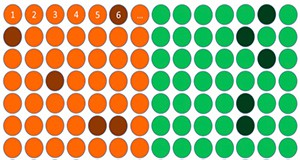
In order to evaluate their programs, Extension offices have to gather evidence about program outcomes and impacts. The first step of this process is to determine the appropriate amount of data needed, or the correct sample size. Using a sample can help Extension professionals save time, money, and labor because fewer people must be interviewed or surveyed; thus the complete set of data can be collected quickly. This nine-page fact sheet provides an overview of sampling procedures, beginning with how to determine the research problem, define the population, and decide whether to sample and going on to explain the different types of samples and how they are used. Written by Glenn D. Israel, and published by the Agricultural Education and Communication Department.
http://edis.ifas.ufl.edu/pd005